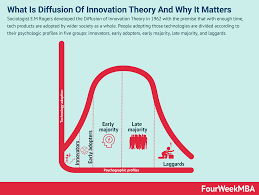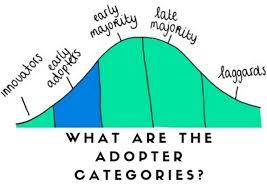The Diffusion Theory
The theory of diffusion was introduced by Everett Rogers who published a book in 1962 called Diffusion of Innovation.
The theory is used to show people's feedback and how they feel about an idea over a period of time.
Over a period of time the way people communicate with each other has changed especially as technology has become more advanced.
For example, social media has become a big aspect in today's world.
Most people use social media as a way to communicate with one another.
People create online communities where they can share information, ideas, and content with more people than just in their local area.
Social media has a broad span of uses for example dating apps, professional work sites, and different ways of messaging each other.
To use all these different social media platforms technology is required.
Since a majority of people use social media that means most of them use technology which is playing an active role in our society.
The way individuals engage and communicate with one another has altered as a result of social media's exponential growth.
People can now gain deeper insights into one another's life thanks to it.
People have conflicting feelings about social media and whether they will choose to engage in making social media accounts because social media has numerous positive and negative effects.
The Five Adopter Categories
Innovators: These are the ones who are willing to take a risk and bear the costs if something doesn't work out.
Early Adopters: These people are at the forefront of innovation.
They are open to updating and changing.
Early Majority: These people are willing to take ideas once they have seen success and the advantages it has.
Late Majority: These are the people who don’t know how to feel about change and will only adjust if they can prove that it is successful.
Laggards: These are the ones who stick with their traditions and are not willing to make changes if there’s no changes to be made.
The way that individuals are grouped into these categories has to do with the generations they are born in.
It definitely plays an aspect in how people view social media.
For example, people around their 70’s are not really on social media compared to people who are in their mid 40’s.
More people around this age tend to be on Facebook compared to instagram.
The newer generations as in millennials and generation x are on instagram.
As newer generations happen the younger people are when they first start out on social media platforms.
Due to the fact kids get technology and learn how to work it at a younger age.






No comments:
Post a Comment